|
Getting your Trinity Audio player ready...
|
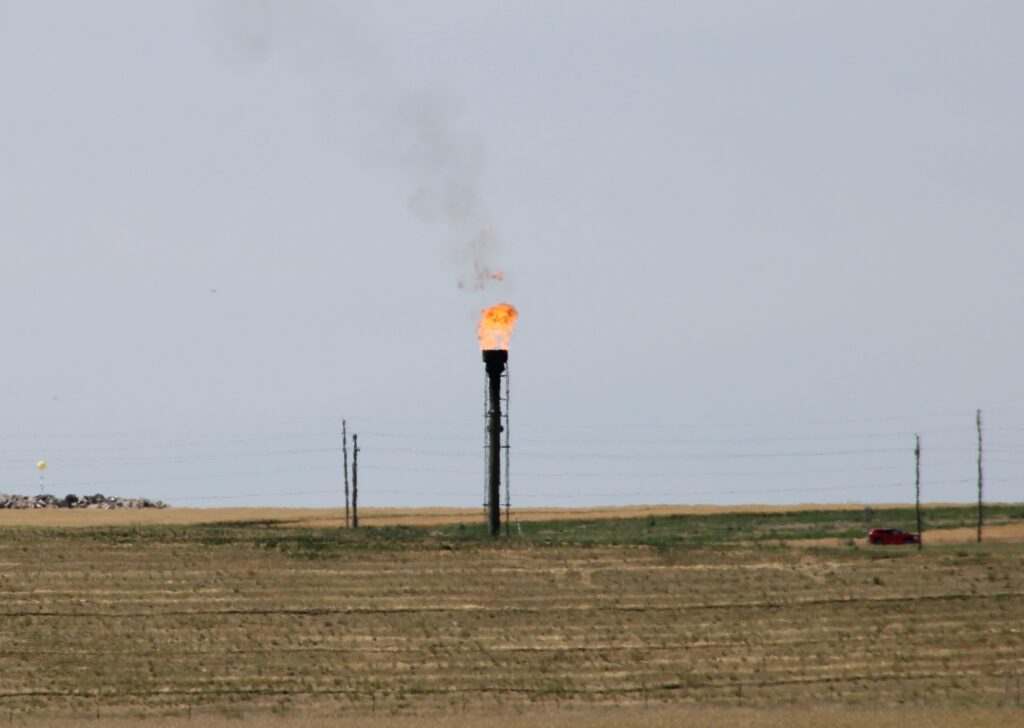
Addressing Pollution from Midstream Oil and Gas
During a hearing scheduled for December 18-20, Colorado’s Air Quality Control Commission (AQCC) will adopt new rules to reduce greenhouse gas (GHG) emissions from the midstream oil and gas sector.
The midstream sector covers facilities involved with the processing, transport, and storage of oil and gas. Some examples of midstream facilities familiar to many Coloradans who live with oil and gas in their communities are compressor stations and gas plants.
In 2019, Colorado became the first state in the nation to pass a law requiring mandatory, statewide reductions in GHG emissions. Laws and rules adopted since then set emissions reduction targets for specific industries, such as the midstream oil and gas sector.
Additionally, Colorado’s Environmental Justice Act requires the AQCC to prioritize reducing GHG emissions at facilities in disproportionately impacted communities (DICs). Sources of GHGs also emit dangerous co-pollutants such as volatile organic compounds (VOCs), which are harmful to human health and contribute to the formation of ozone.
Reducing pollution in DICs is a vital, urgent goal because these communities have a higher proportion of vulnerable populations exposed to environmental harms than other communities across the state.
Observations with our optical gas imaging (OGI) camera, which visualizes GHGs like methane as well as other harmful VOCs, highlight the necessity of this goal.
Midstream Polluters in DICs
Earthworks has conducted 166 OGI surveys at 58 midstream facilities in Colorado since 2014. We observed pollution on 69 of those 166 surveys and at 27 different facilities. We therefore observed pollution on nearly every other survey of a midstream facility, and at some facilities we observed multiple and/or recurring pollution events.
Some of the pollution we observed was due to malfunctioning equipment, like a flare that failed to properly ignite or a broken component on a methane gas-powered engine. However, much of the pollution we observed at these facilities was intentional, such as oil or wastewater storage tanks designed to release airborne pollutants into the atmosphere. In these cases, operators are not obligated to control the pollution under current air quality regulations.
Importantly, out of those 27 midstream facilities where we observed pollution, 14 are located in or near a DIC. These 14 facilities, where polluting activities have the greatest impact on vulnerable populations, account for an astounding 51 of our 69 observations of pollution from midstream facilities.
This means that 75% of the pollution events we observed at a midstream facility in Colorado occurred at midstream facilities located in or near a DIC!
In other words, even if the AQCC was not required to prioritize emissions reductions from facilities located in DICs, we would strongly advocate for this outcome based on our findings.
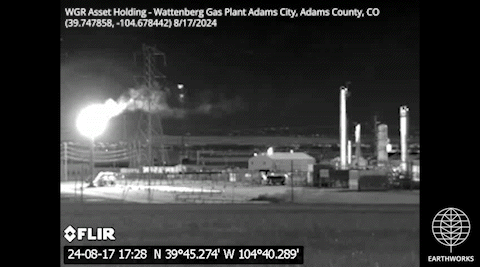
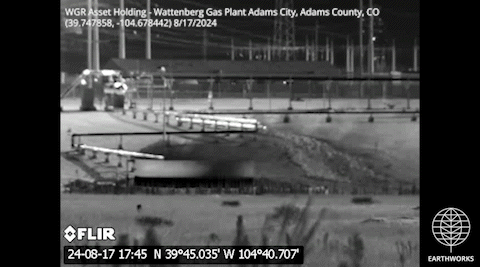
OGI footage of pollution from a wastewater storage tank on a gas plant located in a DIC just outside Aurora. On the left, the footage was captured from over ¼ mile away. On the right, the footage was captured from the roadside next to the facility. This pollution is intentional and allowed.
Prioritizing Protections
The AQCC must adopt rules that both reduce GHG emissions from the midstream oil and gas sector AND prioritize those reductions at facilities located in DICs. This goal should be easy to accomplish, as there are plenty of polluting midstream facilities located in DICs.
Unfortunately, the draft rules that the AQCC will consider do not have a concrete requirement for midstream operators to reduce emissions at facilities located in DICs. Even more alarming, they do not specifically prohibit an operator from increasing emissions at facilities in DICs, so long as they reduce emissions at other facilities elsewhere.
The draft rules look like this because they allow midstream operators to decide how and where to achieve emissions reductions, rather than requiring them to achieve those reductions at specific facilities.
In other words, the rules prioritize flexibility for operators over guaranteed protections for communities.
This is unacceptable and we need your help in making this point loud and clear: the AQCC needs to put people over polluters. You can provide written comments or sign up to give oral comments at a virtual hearing on December 18th using this link.
Colorado’s frontline communities fought hard to pass the Environmental Justice Act because the State needs to be held accountable for a historical failure to address pollution in communities where the interests of industry have always taken priority over the health of residents. We cannot allow history to continue to repeat itself.
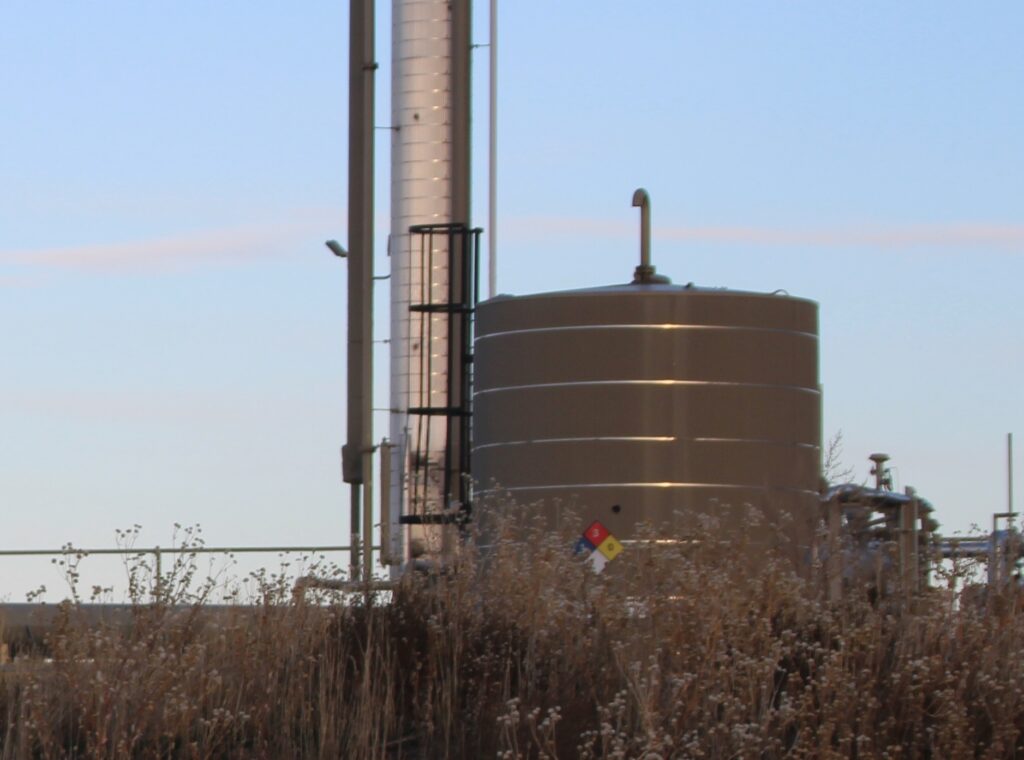
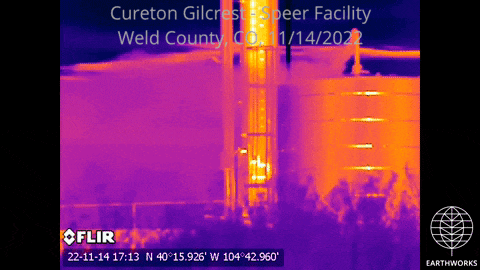
Uncontrolled release of pollution from a storage tank on a midstream facility located adjacent to a DIC outside Gilcrest, CO.

